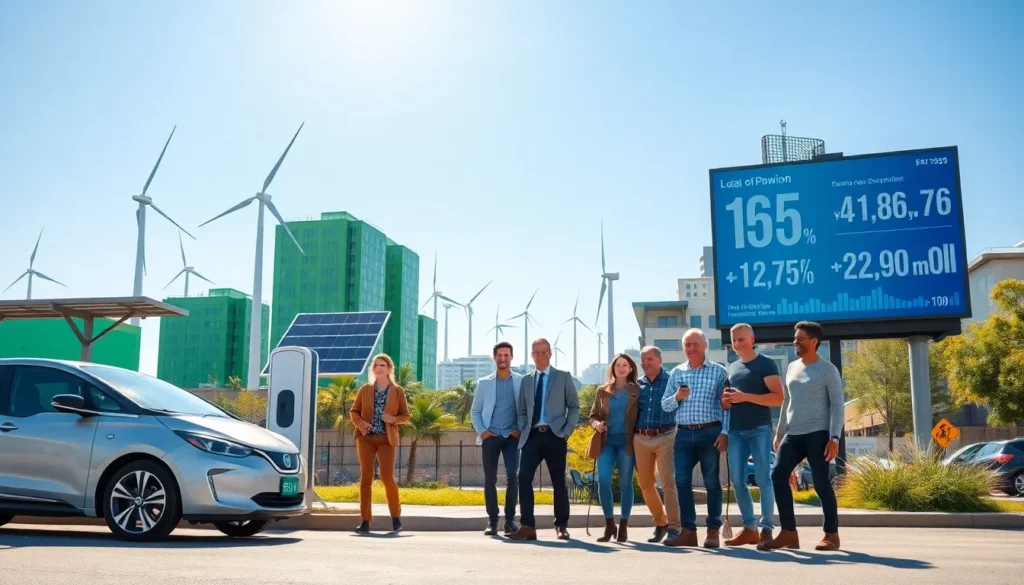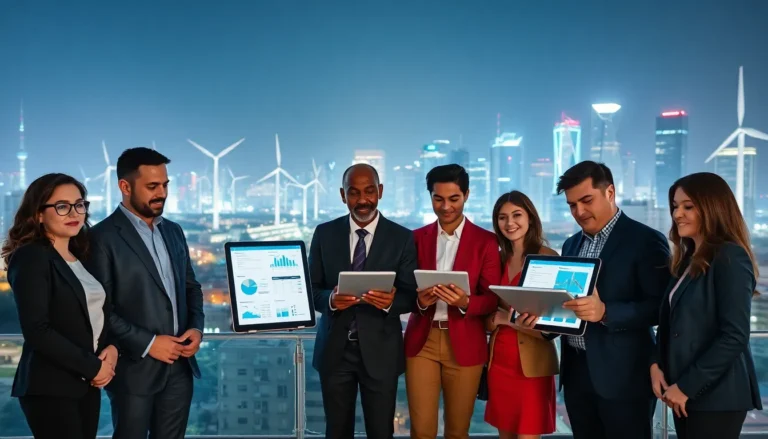Power plays a pivotal role in shaping modern societies, influencing everything from technology to daily conveniences. “Lots of power” encompasses a broad spectrum of energy sources and their applications, interlinked with our lifestyle, industry, and sustainability efforts. As the world increasingly looks toward sustainable solutions, understanding the dynamics of power is crucial for progress. In this text, we will explore the significance of power across different facets of life, the types and sources that fuel our society, and the emerging innovations shaping our energy future.
Table of Contents
ToggleWhat Is Lots Of Power?

At its core, “lots of power” refers to an ample supply of energy that is utilized in various forms, electricity, mechanical energy, thermal energy, and more. This term often connotes not just a high quantity of energy but also the efficiency and capability to perform work on a large scale. In today’s technological landscape, power is the backbone of innovation, propelling machines, transporting information, and enabling communication over vast distances. The phrase encapsulates both the physical power generated from sources such as fossil fuels and renewables, and the socio-economic power derived from access to energy resources. In essence, having “lots of power” signifies empowerment, efficiency, and significance in both personal and societal contexts.
The Importance of Power in Daily Life
Power is integral to daily life, impacting everything from the basic comfort of home appliances to the operational capabilities of industries. In homes, electricity powers lighting, heating, cooling, and appliances, significantly enhancing quality of life. Beyond individual households, power influences productivity and economic growth. For instance, factories and offices depend on reliable energy supplies to operate machinery, conduct research, and manufacture products. The societal implications are vast: regions with stable power access tend to develop more robust economies and infrastructure compared to areas struggling with energy shortages. Hence, understanding and improving power systems is essential not just for convenience, but for advancing overall societal wellness.
Different Types of Power Sources
Power generation relies on a mix of sources, each with unique attributes and impacts. The primary types of power sources include:
1. Fossil Fuels
- Coal, oil, and natural gas have been the dominant energy sources for a century. They are relatively easy to extract and convert into electricity, but, they contribute significantly to greenhouse gas emissions.
2. Renewable Energy
- Solar, wind, hydroelectric, and geothermal are considered sustainable, as they harness natural processes to generate energy. With advancements in technology, renewables are becoming more efficient and cost-effective, positioning them as the future of energy.
3. Nuclear Energy
- Nuclear power is a potent source that generates electricity without emitting carbon dioxide during operation. But, challenges like waste disposal and public perception often hinder its broader acceptance.
4. Bioenergy
- Derived from organic materials, bioenergy is continually replenished. Biomass and biogas can serve as a bridge in the transition to a cleaner energy future, although they must be managed sustainably to minimize environmental impact.
5. Hydrogen
- As a versatile fuel, hydrogen can be used in various applications, from powering vehicles to generating electricity. Its potential lies particularly in fuel cells, which produce only water as a byproduct.
Exploring the benefits and drawbacks of these power sources reveals pathways to ensure long-term sustainable energy solutions.
The Role of Lots Of Power in Sustainability
In the context of sustainability, the phrase “lots of power” takes on a dual meaning. First, it refers to the capability of harnessing and utilizing renewable energy sources without depleting the planet’s resources. Second, it implies the necessity of adequate energy to power sustainable practices across various sectors, including transportation, agriculture, and building construction.
Reducing the carbon footprint, a critical goal for mitigating climate change, relies heavily on transitioning from fossil fuels to sustainable energy. Utilizing lots of renewable power can significantly decrease reliance on non-renewable sources, promoting a circular economy where energy and materials are reused and recycled. Besides, innovations in smart grid technology and energy efficiency empower consumers and businesses to manage their energy use better, leading to reduced waste and cost savings. Summarizing, sustainable power practices not only contribute to environmental health but also bolster economic resilience and social equity.
Innovations Driving the Future of Power
The power sector is currently experiencing several transformative innovations that promise to redefine energy consumption and generation. These advancements include:
1. Smart Grids
- Smart grid technology enhances the reliability, efficiency, and security of energy delivery. It leverages digital technology to allow two-way communication between utilities and consumers, facilitating real-time data analysis and energy management.
2. Energy Storage Solutions
- Improvements in battery technologies, particularly lithium-ion and emerging solid-state batteries, enable better storage of renewable energy, addressing one of the key challenges of solar and wind power: intermittency.
3. Decentralized Energy Production
- Distributed energy resources, such as home solar panels and local wind turbines, allow consumers to produce their own energy, enhancing resilience and reducing reliance on centralized power systems.
4. Electric Vehicles (EVs)
- The rise of EVs aligns with greater renewable energy adoption, as many drivers seek sustainable energy solutions. Charging infrastructure developments further support the integration of EVs with the power grid.
5. Artificial Intelligence (AI)
- AI algorithms are increasingly being applied to optimize energy efficiency in management processes, predict energy demand, and even enhance the operation of power plants.
These innovations collectively create a powerful shift towards smarter, cleaner, and more reliable energy systems, driving a sustainable future.
Challenges in The Power Sector
Even though advancements, the power sector faces numerous challenges that hinder the transition towards a more sustainable and efficient energy future. Key issues include:
1. Infrastructure Limitations
- Aging infrastructure can lead to inefficiencies and increased outages, particularly in regions unprepared for modern innovations. Upgrading existing grids is essential for integrating renewable technologies.
2. Regulatory and Policy Barriers
- Inconsistent regulations, permits, and tariffs can stifle innovation and the adoption of new technologies. Policymakers must work collaboratively with industry leaders to create transparent and adaptive frameworks.
3. Financial Constraints
- Transitioning to renewable energy requires significant investment. Many regions, especially developing countries, lack the necessary capital to carry out larger-scale energy solutions.
4. Public Perception and Education
- Misinformation surrounding energy sources can create public resistance to necessary changes. Programs to educate the public about the benefits of adopting renewable energy are vital.
Addressing these challenges will be crucial for ensuring that the future power landscape is resilient, adaptable, and environmentally friendly.
Conclusion
Summarizing, “lots of power” embodies far more than mere energy generation: it signifies an essential component interwoven into the fabric of modern life, economy, and sustainability. The importance of power is reflected daily, from home conveniences to global industry operations. As society stands at the forefront of energy innovation, understanding the types of power sources and their implications helps position everyone to better participate in the journey toward a sustainable future. By addressing challenges and embracing new technologies, society can harness the true potential of power to create an equitable, sustainable, and thriving world.








